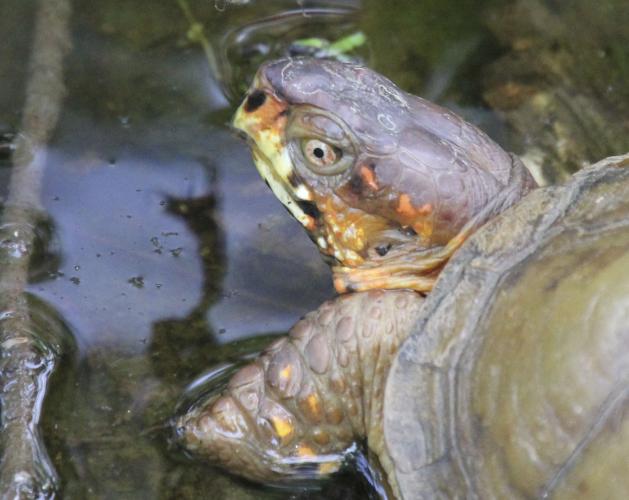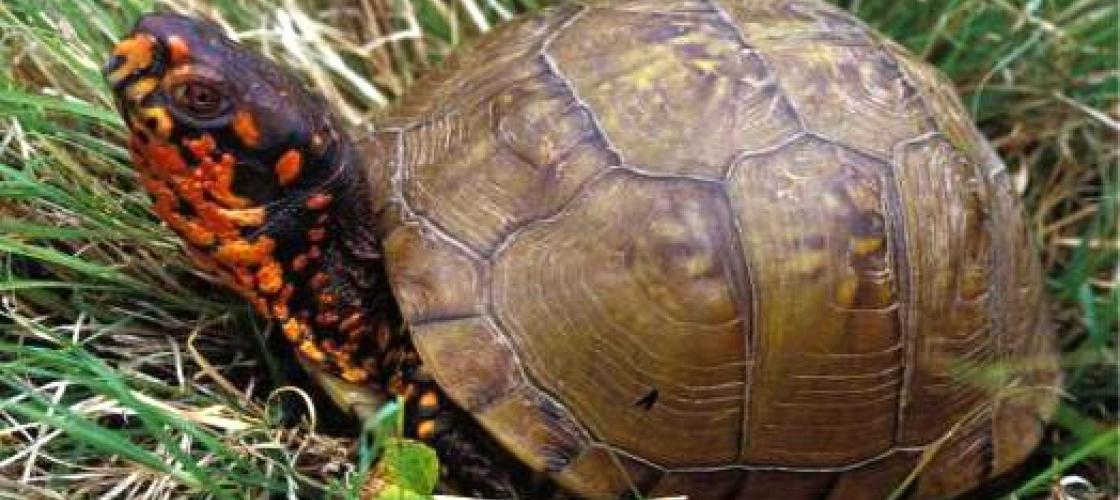While the steadfast tortoise wins his race with the hare, when it comes to contests with automobiles, turtles always lose.
If you’ve been driving through the countryside lately, you may have noticed box turtles sharing the pavement. Spring rains and warm weather make this the season that box turtles wander. As they search for food and mates, these harmless land turtles must cross roads that pass through their home areas.
Turtles often spend decades within a small plot of ground, but sometimes they wander great distances. Biologists have used tracking devices to follow these traveling turtles. From one turtle’s point of capture, he crossed roads, fields and backyards. He swam a creek and burrowed under a fence. When the biologists finally stopped following him, he had traveled more than six miles.
While most Missouri turtles live 15-30 years, box turtles can live 50 to 80 years, occasionally more than 100 years. They spend their quiet lives eating plants, earthworms and insets. Their shell provides a bony shield to protect them from most natural enemies. But cars needlessly kill thousands of turtles each year. In fact, cars are probably their biggest cause of death. Next time you drive across the countryside, please be alert to avoid hitting these innocent travelers.
It’s Ornate Box Turtle Time!
- This small, colorful turtle has a domed upper shell and a hinged lower shell. The upper shell is usually smooth or flattened along the top, without a ridge, and is normally brown with numerous yellow lines radiating from the center of each individual plate. A yellow stripe often runs down the top. The lower shell is brown with distinct yellow spots and blotches. The head and limbs are brown or black with yellow spots and blotches. There are normally four toes on each hind leg.
- The ornate box turtle is colorful and harmless. It can shut itself up in its boxlike shell.
- It is a fairly common resident of Missouri’s native prairies and grasslands, including pastures, open woods and glades.
- Even though adult box turtles are defended by their shells, the eggs and young provide food for many predators. Hatchlings are only about 1 inch long and are especially vulnerable.
Discover more about ornate box turtles with the MDC’s Field Guide.






Recent Posts
























